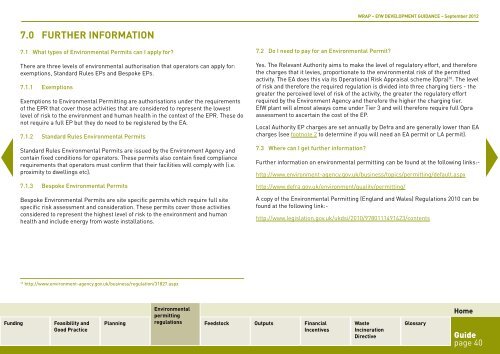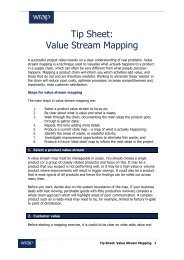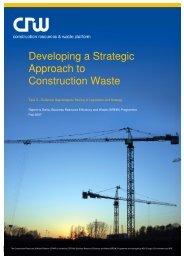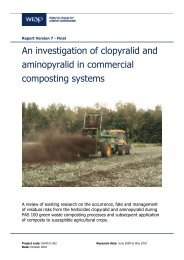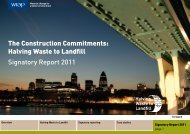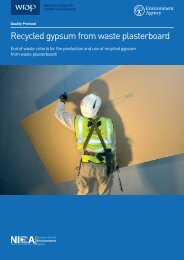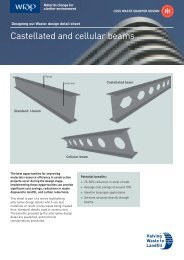EfW DEVELOPMENT GUIDANCE - Wrap
EfW DEVELOPMENT GUIDANCE - Wrap
EfW DEVELOPMENT GUIDANCE - Wrap
You also want an ePaper? Increase the reach of your titles
YUMPU automatically turns print PDFs into web optimized ePapers that Google loves.
WRAP – <strong>EfW</strong> <strong>DEVELOPMENT</strong> <strong>GUIDANCE</strong> – September 2012<br />
7.0 Further information<br />
7.1 What types of Environmental Permits can I apply for<br />
There are three levels of environmental authorisation that operators can apply for:<br />
exemptions, Standard Rules EPs and Bespoke EPs.<br />
7.1.1 Exemptions<br />
Exemptions to Environmental Permitting are authorisations under the requirements<br />
of the EPR that cover those activities that are considered to represent the lowest<br />
level of risk to the environment and human health in the context of the EPR. These do<br />
not require a full EP but they do need to be registered by the EA.<br />
7.1.2 Standard Rules Environmental Permits<br />
Standard Rules Environmental Permits are issued by the Environment Agency and<br />
contain fixed conditions for operators. These permits also contain fixed compliance<br />
requirements that operators must confirm that their facilities will comply with (i.e.<br />
proximity to dwellings etc).<br />
7.1.3 Bespoke Environmental Permits<br />
Bespoke Environmental Permits are site specific permits which require full site<br />
specific risk assessment and consideration. These permits cover those activities<br />
considered to represent the highest level of risk to the environment and human<br />
health and include energy from waste installations.<br />
7.2 Do I need to pay for an Environmental Permit<br />
Yes. The Relevant Authority aims to make the level of regulatory effort, and therefore<br />
the charges that it levies, proportionate to the environmental risk of the permitted<br />
activity. The EA does this via its Operational Risk Appraisal scheme (Opra) 10 . The level<br />
of risk and therefore the required regulation is divided into three charging tiers - the<br />
greater the perceived level of risk of the activity, the greater the regulatory effort<br />
required by the Environment Agency and therefore the higher the charging tier.<br />
<strong>EfW</strong> plant will almost always come under Tier 3 and will therefore require full Opra<br />
assessment to ascertain the cost of the EP.<br />
Local Authority EP charges are set annually by Defra and are generally lower than EA<br />
charges (see footnote 2 to determine if you will need an EA permit or LA permit).<br />
7.3 Where can I get further information<br />
Further information on environmental permitting can be found at the following links:-<br />
http://www.environment-agency.gov.uk/business/topics/permitting/default.aspx<br />
http://www.defra.gov.uk/environment/quality/permitting/<br />
A copy of the Environmental Permitting (England and Wales) Regulations 2010 can be<br />
found at the following link:-<br />
http://www.legislation.gov.uk/ukdsi/2010/9780111491423/contents<br />
10<br />
http://www.environment-agency.gov.uk/business/regulation/31827.aspx<br />
Funding<br />
Feasibility and<br />
Good Practice<br />
Environmental<br />
permitting<br />
Planning regulations Feedstock Outputs Financial<br />
Incentives<br />
Waste<br />
Incineration<br />
Directive<br />
Glossary<br />
Home<br />
Guide<br />
page 40


